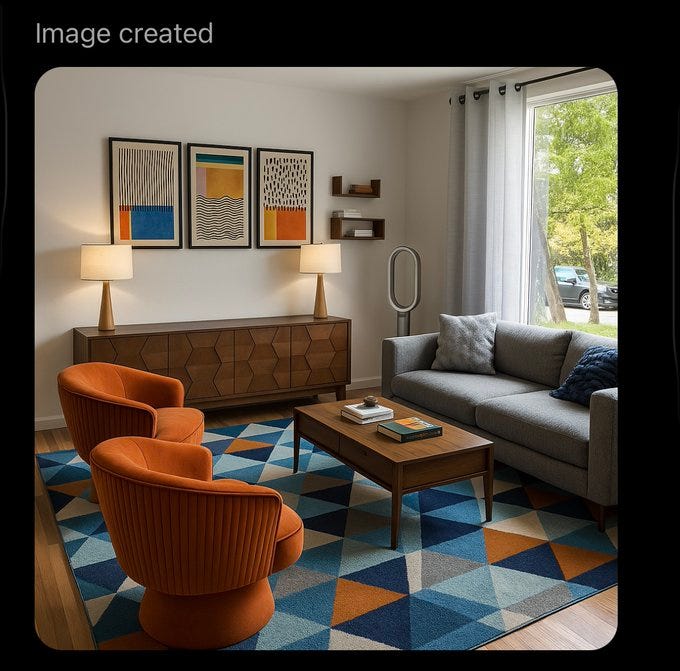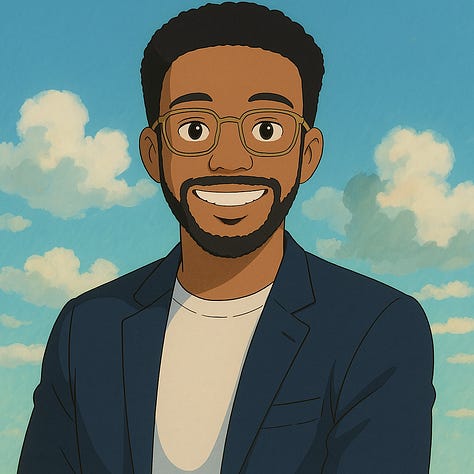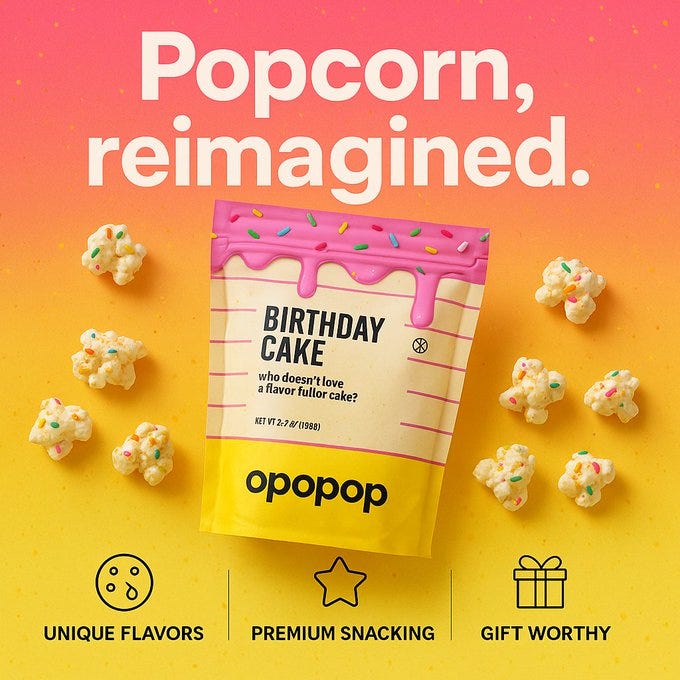What I Read This Week (4/13/25)
Wisdom from Naval Ravikant, Open AI Image Generation, Using Ancient DNA to Bring Back Extinct Animals, Curing Paralysis with Stem Cells, Buying the Trade War, Spring Break Adventures
Every week, I like to share what caught my attention. This is from 3/25/25 to 4/13/25.
I took two weeks off, but now I’m back.
The last few weeks were quite interesting for me, so this edition will be a little longer this week.
Timeless Idea💡
“Not wanting something is as good as having it.”
Naval Ravikant
Aristotle once walked through a bustling marketplace surrounded by shiny objects and tempting luxuries. He looked around and said, “How many things there are that I do not want.” That’s stuck with me.
I feel the same way. There’s a freedom in not wanting things.
Some shoes don’t tempt me. Cars I’ll never crave. Even entire lifestyles that just don’t pull at me. That space, where desire doesn’t live, is where focus can flourish. When I stop wanting what doesn’t matter, I can double down on what does.
It’s not that I have everything. It’s that I don’t need everything.
And that’s even better.
New Idea 🌟
Thoughts on OpenAI Image Generation
Over the break, ChatGPT quietly dropped a huge update: it can now make stunning images with their 4o model.
I’m talking about full-blown ad campaigns, educational posters, cartoons of your friends, interior design mockups, logos, UI designs—you name it.





This isn’t just a cool toy. I think it changes how people build things. Many huge technological breakthroughs are first seen as play.
Before this update, I exclusively used Midjoruney for my image generation, but I’m adding 4o to my workflow now.
A single person can now look like a team. Startups can move faster, and established companies can scale content with less friction.
It’s not just one tool, it’s like suddenly having a marketing team, art department, and creative studio, in your pocket.
A Few Thoughts:
📌 I used it to study anatomy & other things
I asked for accurate muscle diagrams and used it to sketch and understand body mechanics. It was like having a free tutor that could create images for me to understand better. From my experience, visuals are one of the best ways to apprehend new knowledge and I’m excited to use this to my advantage.

📌 It changes online ads.
Ads can now be generated on demand. There are no longer long wait times or big budgets to test visuals.
📌 It changes filters.
Remember when Instagram filters required coding? Now, you just say, “Studio Ghibli style,” “South Park,” or “Dr. Seuss,” and you’ve got it.
📌 It changes memes.
Memes will get better. Why? The effort-to-quality ratio just flipped. Good memes are now easier to make than bad ones.
📌 It may change books.
Imagine taking a public-domain book and turning each page into a comic panel. I want someone to do this with Frankenstein or Jane Eyre. Suddenly, old books get a second life. I eventually want to try this with classic works of literature or philosophy.
I may publish a comic version of Seneca's Letters From a Stoic as the next book. Making those ideas accessible may be a great advantage.
📌 It changes slide decks.
We’re close to the day when bullet-point-only presentations will feel lazy. AI can now generate custom images for each idea.
📌 It may change social networks.
Once this becomes widespread, every image upload button might have a “generate instead” option. To post without a photo, just click “make one.”
📌 It should change image search.
Looking for a stock photo? Soon, you’ll just type and generate what you want—right next to the search results.
This is the beginning of something big. A visual revolution that puts the tools in everyone’s hands.
Scientists Have Brought Back Direwolfes from Ancient DNA
On October 1, 2024, two wolf pups named Romulus and Remus were born. But these aren’t just any pups.
They’re the first genetically engineered dire wolf hybrids in history.
Thanks to CRISPR gene editing, scientists at Colossal Biosciences took DNA from ancient dire wolves—fossils dating back over 11,000 years—and spliced it into modern gray wolf embryos. The result: pups with white fur, bigger jaws, and a prehistoric presence.
But they’re not pure clones. These are hybrids. Their goal? To eventually restore the ecological roles once filled by dire wolves.
But not everyone’s cheering.
At six months old, Romulus and Remus already show signs of being less social with humans. Critics worry about unintended consequences, disrupted ecosystems, unpredictable behavior, or worse.
This sparks bigger questions:
Should we bring back extinct species?
What counts as “natural” anymore?
Are we rewriting evolution—or just remixing it?
Whether it’s a marvel of science or a cautionary tale, one thing’s clear:
We’re entering a new era where extinction might no longer mean forever.
Paralyzed Man Stands Again, Thanks to Stem Cells
According to Nature, a team in Tokyo just pulled off a fantastic accomplishment.
At Keio University, four men with severe spinal cord injuries, no movement, and no feeling became the first people to receive a new kind of stem cell treatment.
The therapy used induced pluripotent stem cells (iPSCs)—adult cells (like skin) that scientists reprogram into blank slates. These can then be guided to become specific types of cells, like the ones found in the spinal cord.
Researchers transformed these into neural precursor cells and injected two million into each patient’s injury site to rebuild the nerves and restore function.
What Happened
🧍 One man—paralyzed from the neck down for years—stood up on his own. He’s now in rehab, learning to walk again.
💪 Another regained partial movement in both his arms and legs.
🙁 Two others saw little to no improvement… but none of the patients experienced any major side effects after a year.
Why This Matters
Spinal cord injury affects 20 million people worldwide. Until now, most treatments have focused on managing the injury, not reversing it.
This trial proves that injecting reprogrammed stem cells directly into the spine is safe and that recovery might be possible, at least for some.
And because iPSCs don’t use fetal tissue, this approach avoids the ethical battles tied to embryonic stem cells.
Limitations and the Road Ahead
This was just four people. Scientists aren’t sure why only two improved. Was it timing? What type of injury? Genetics? Like always, more research is needed.
More trials, with control groups and larger sample sizes, are coming.
Still, this is a glimpse of what might be coming: a future in which regenerative medicine doesn’t just manage conditions… it heals them.
What I See In Markets 📈
Buying the Drama: Tariffs, Bonds, and Opportunity
Trump gave the markets a sugar high.
His announcement of a 90-day tariff pause (excluding that brutal 145% tariff on China) sent stocks rallying—but this wasn’t generosity. It looks like a short-term play to pump the market and lower bond yields… maybe to get better refinancing terms.
I think the US needs to refinance its debt at a lower rate, and the only way to do that is to force big money to invest in bonds, lowering interest rates.
Then came the retaliation. China hit back with 125% tariffs and started dumping U.S. bonds, which spooked the market. Bond yields surged, and prices fell.

I also think the language this administration uses to define the tariffs is incorrect. It seems like the tariffs aren’t reciprocal; they’re proportional.
China and the U.S. aren’t playing nice, and it’s starting to look like this rivalry won’t fade anytime soon.
Short-Term Pain, Long-Term Pivot
We’re heading into short-term pain, especially in supply chains. Let’s be real: America doesn’t yet have the manufacturing muscle to go toe-to-toe.
I keep thinking back to COVID. When the global supply chain collapsed, shelves went empty, and that’s when I realized how vulnerable we are.
A self-sufficient America?
That idea still sticks with me. We need it. Maybe this friction is the beginning of that reset.
What I’m Doing
I’m watching this entire drama unfold and buying the dip at the proper levels.
💡 Stocks I’m Watching Closely:
Big Tech (Tariff-sensitive, but strong):
NVDA (support zone: $100–105)
AMZN ($170–175)
META, GOOG, TSLA
My 2025 Favorites (Higher risk, higher reward):
SOFI, SHOP – I see big upside
HNST, ELF, CAKE, NKE – a bit more consumer-dependent, but I like them long-term.
I’m waiting for key support levels, keeping favorites to 20–30% of my portfolio, and using NVDA and SOFI as early market strength indicators.
Reminder: I am a long-term investor, and my time horizon is at least 5-10 years.
Personal Update 💙
Spring Break Adventures
I just wrapped up Spring Break, and honestly—this is one of the best parts of being a teacher. A solid stretch of time to rest, reset, and (my personal fav, work on) what’s next.
Here’s how I spent mine:
👨🏫 Prepping to Present
I’ve been working on a talk for the School Climate Conference. I’m hoping it’ll be not just good but useful, something people can take to their schools and actually apply.
🌴 Mission Bay Moments
We took a little family trip to San Diego, stayed near Mission Bay, and had a blast. We had beach days, bike rides, Belmont Park, and even a rare date night (thanks to my mother-in-law). Watching my daughters take it all in was a joy.
🐆 Zoo Days
We also went to the Living Desert Zoo. My girls are obsessed with animals; seeing their faces light up never gets old.
🛠️ Building, Building, Building
I carved out some deep work time for my education company, and I’m excited. Two ideas are taking shape—things that could really support students, families, teachers, and administrators. It’s still early, but the direction feels promising.
❤️ Home Is the Highlight
The best part, though? Just being with my daughters and my wife at home. It was restorative, chaotic, deeply fun, and full of love. I’m grateful I get to enjoy them so much. Honestly, I didn’t want it to end.





